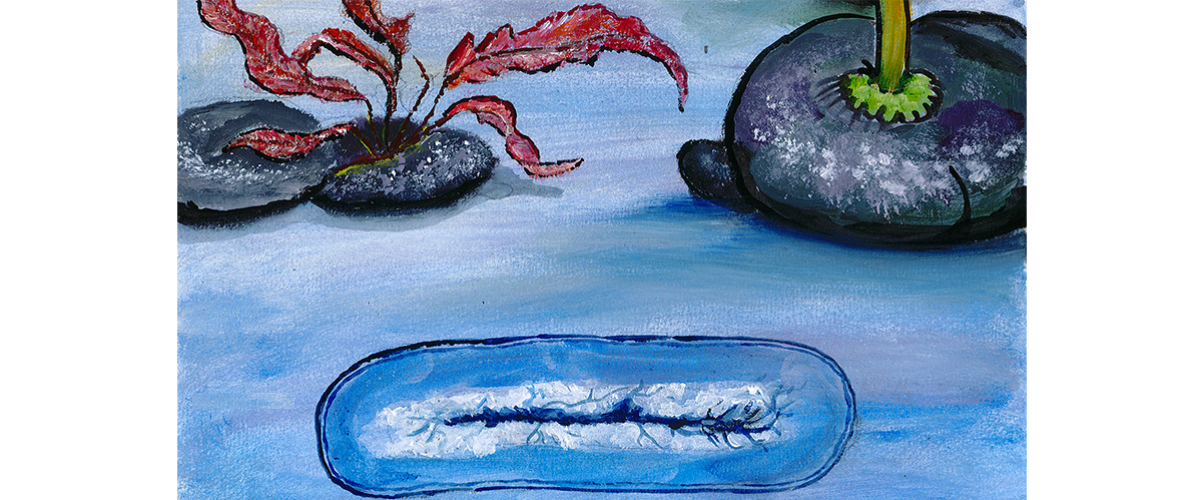


Genome sequencing of Zobellia galactanivorans, a model algae-associated bacterium
Link(s)
Algae constitute a huge biomass composed at least by 50% of polysaccharides. These complex polymers essentially differ from the polysaccharides of land plants and the enzymes involved in their degradation remain largely uncharacterized. In the last 20 years the marine bacterium Zobellia galactanivorans has emerged as the main model for the discovery of enzymes specific for the bioconversion of algal polysaccharides.The characterization of these new enzymes is a key issue to understand the marine carbon cycle. These enzymes are also essential for the valorization of algal biomass and for blue biotechnology.
In collaboration with Genoscope and the Max Planck Institute of Bremen, the Marine Glycobiology group (CNRS/UPMC) has published in Environmental Microbiology an extensive genomic and physiological analysis of Z. galactanivorans. Notably a comparison with more than 100 genomes of marine heterotrophic bacteria confirms that Z. galactanivorans is currently the microorganism with the largest capacities for the bioconversion of algal polysaccharides. This microbe also possesses numerous adaptive traits for algae-associated life (consumption of algal exudates, iodine metabolism, methylotrophy, etc). Therefore, Z. galactanivorans is also a suitable model for the study of algae-bacteria interactions. Finally on a more holistic level this comparative genomic study demonstrates that habitat and taxon are two major forces driving the carbohydrate catabolism of marine bacteria.
Reference:
Barbeyron T, Thomas F, Barbe V, Teeling H, Schenowitz C, Dossat C, Goesmann A, Leblanc C, Glöckner FO, Czjzek M, Amann R and Michel G. (2016) Habitat and taxon as driving forces of carbohydrate catabolism in marine heterotrophic bacteria: example of the model algae-associated bacterium Zobellia galactanivorans. Environmental Microbiology, doi: 10.1111/1462-2920.1358
Les algues constituent une biomasse gigantesque, composée d’au moins 50% de polysaccharides. Ces polymères complexes diffèrent grandement des polysaccharides des végétaux terrestres et les enzymes impliquées dans leur dégradation sont très peu connues. Ces vingt dernières années la bactérie marine Zobellia galactanivorans s’est imposée comme un modèle incontournable pour la découverte des enzymes de bioconversion des polysaccharides d’algues. En collaboration avec Génoscope et l’institut Max Plank de Brême, l’équipe Glycobiologie Marine vient de publier dans Environmental Microbiology une analyse génomique et physiologique extensive de Z. galactanivorans. Notamment la comparaison avec plus d’une centaine de génomes de bactéries marines hétérotrophes confirme que Z. galactanivorans est actuellement le microorganisme qui a les plus grandes capacités de bioconversion des polysaccharides d’algues. Il possède de nombreux traits adaptatifs à la vie en association avec les algues (consommation des exsudats d’algues, métabolisme de l’iode, methylotrophie, etc). Par conséquent, Z. galactanivorans est aussi un modèle de choix pour étudier les interactions algues – bactéries. Enfin d’un point de vue holistique cette étude de génomique comparative démontre que l’habitat et la taxonomie sont deux forces majeures influençant les capacités de dégradation des polysaccharides des bactéries marines.
Référence:
Barbeyron T, Thomas F, Barbe V, Teeling H, Schenowitz C, Dossat C, Goesmann A, Leblanc C, Glöckner FO, Czjzek M, Amann R and Michel G. (2016) Habitat and taxon as driving forces of carbohydrate catabolism in marine heterotrophic bacteria: example of the model algae-associated bacterium Zobellia galactanivorans. Environmental Microbiology, doi: 10.1111/1462-2920.1358
Lien internet: http://onlinelibrary.wiley.com/doi/10.1111/1462-2920.13584/full
Links
[1] http://onlinelibrary.wiley.com/doi/10.1111/1462-2920.13584/full